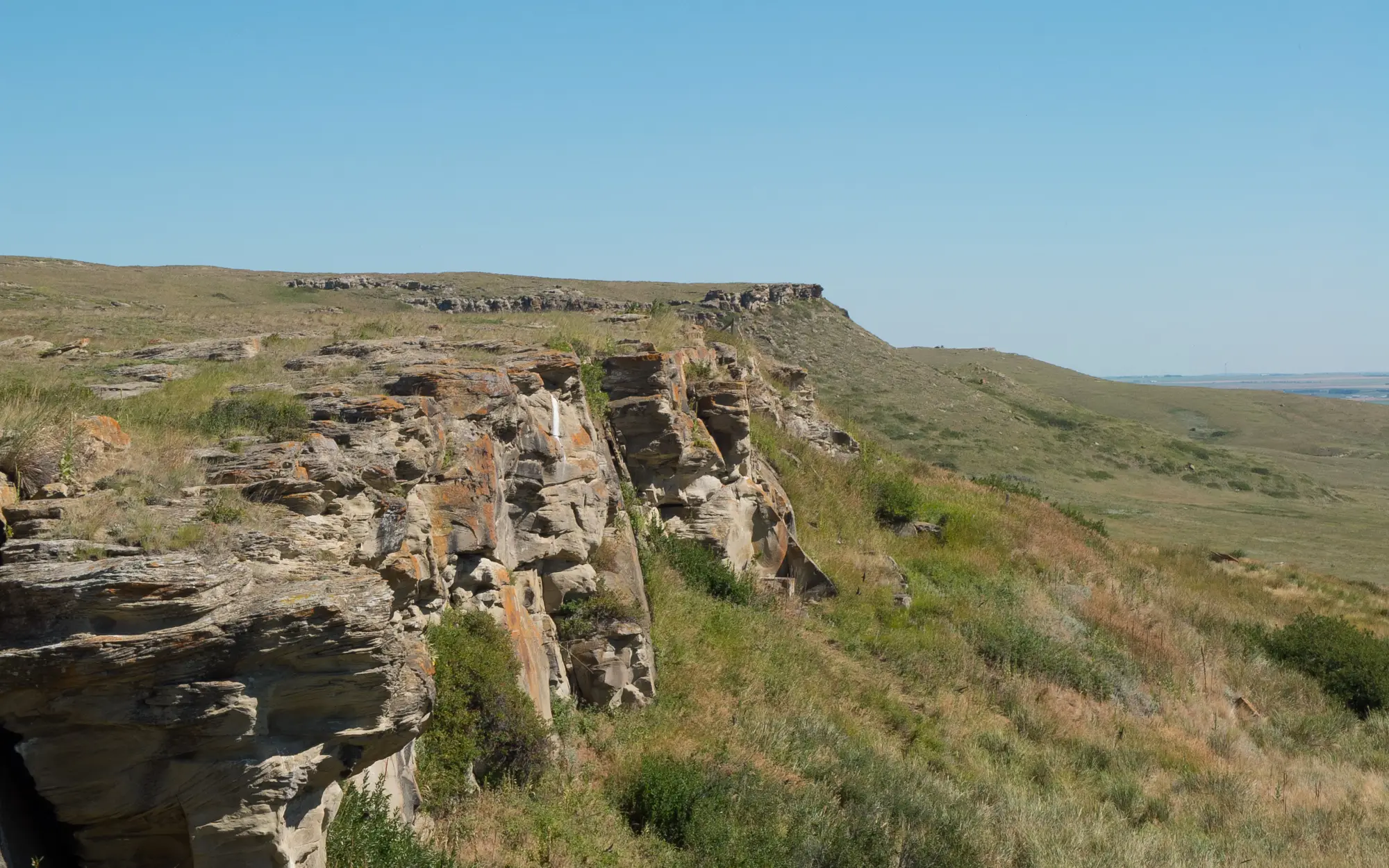
The ancestral hunting site of Head-Smashed-In Buffalo Jump
On the Prairie Plains, above the foothills of the Canadian Rockies in southern Alberta, lies the Head-Smashed-In Buffalo Jump, a historically significant archaeological and cultural site. It is a limestone cliff several meters high that was used for bison hunting by the Blackfeet, the indigenous peoples who inhabited the prairies of part of what is now Canadian Alberta and American Montana.
This native people was mostly nomadic and specialized in hunting bison, their main source of food. To do this, several hunters led the herds of bison to the place, causing them to fall off a cliff, causing the death or serious damage to the animals. In the lower part, another group of people took charge of the corpses to process them and obtain food for the entire group from them.
Specifically, and from several kilometers behind, the herd of bison was directed through a circuit of hundreds of stone mounds arranged for this purpose, cornering them and scaring the animals to create a stampede that went directly to its objective. In this way, the very inertia of the panic of the groups of bison would take them to the cliff where, without remedy, they would plunge down the valley.
In use for at least 5,000 years and up to the mid-19th century, the site displays the bison hunting techniques that the Blackfeet used as part of their way of life.

Bison precipice.
A camp located at the bottom awaited their prey, already dead or seriously injured by the fall. Right there, the quartering of the corpses was carried out to obtain meat, skins and bones with which to ensure food and other products. Remains of stone rings testify to the location of the tipis of said camp, as well as piles of utensils and accumulated animal bones portray the complete hunting activity.
This technique was used for at least 5,000 years by nomadic hunter-gatherer groups, until the arrival of Europeans and the consequent massive decline in bison populations. This fact would finally lead the aboriginal groups to gradually abandon their nomadic way of life to dedicate themselves more to cattle raising in more sedentary populations.
The place was known by Europeans at the end of the 19th century, when it had been out of use for decades. It was excavated by the American Museum of Natural History around the 1940s thanks to the encouragement that descendants of the Blackfoot exerted on archaeologists, in order to preserve the memory of the original peoples. Since 1981 the place was declared a World Heritage Site by UNESCO, due to its importance as a hunting and ceremonial site for the indigenous communities of the region.
On the site there is an Interpretation Center where the ecology, mythology, lifestyle and technology of the Blackfoot are exposed thanks to the archaeological discoveries made, annually hosting related cultural events and festivals.
Welcome to Canada!
Share this Sight with: